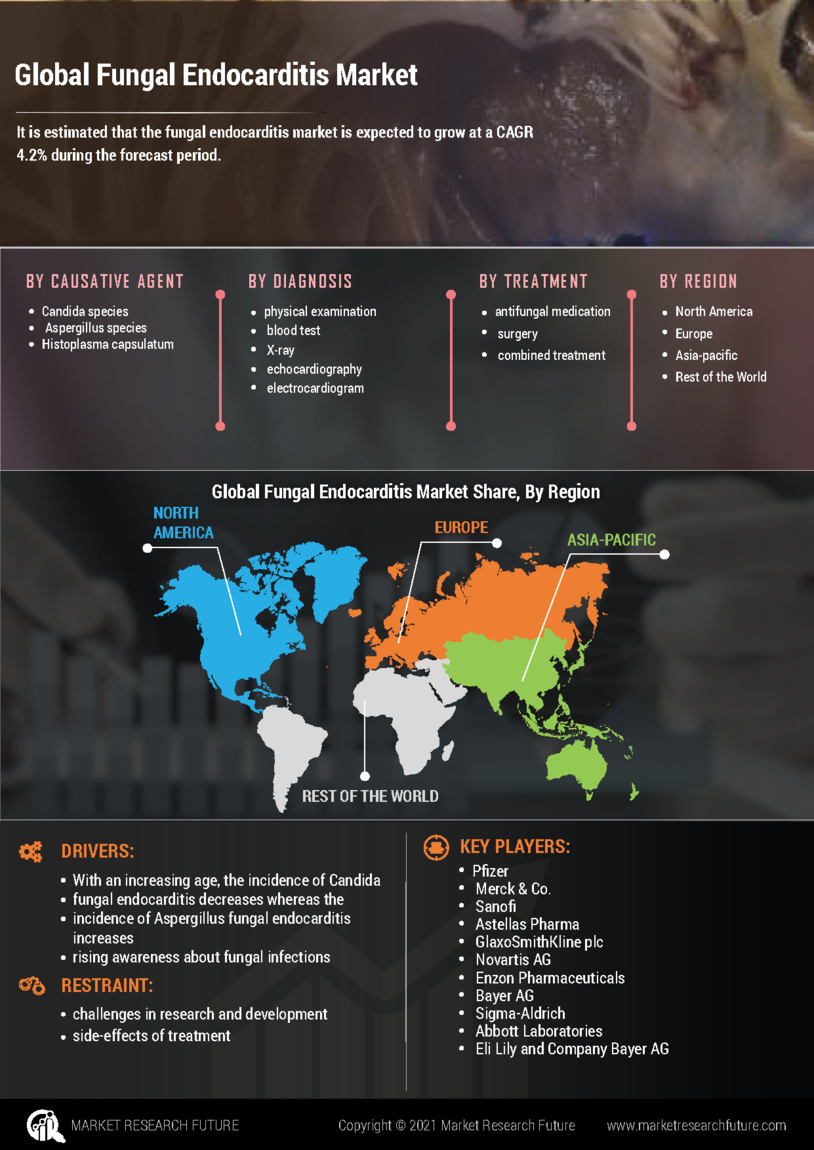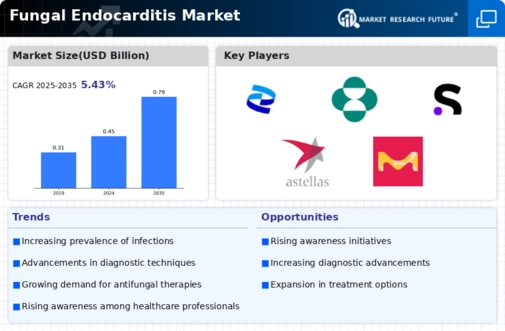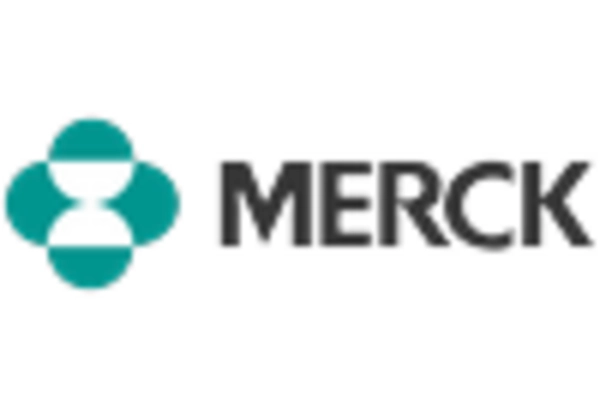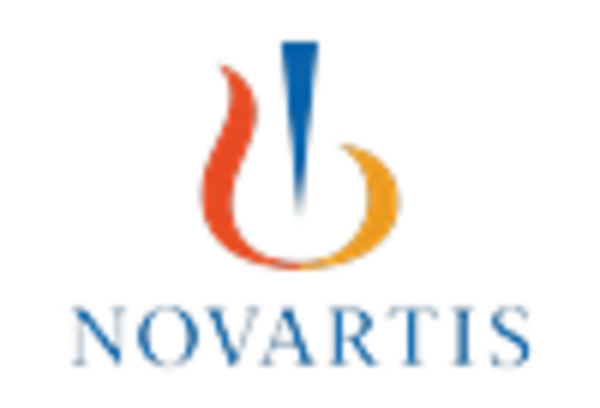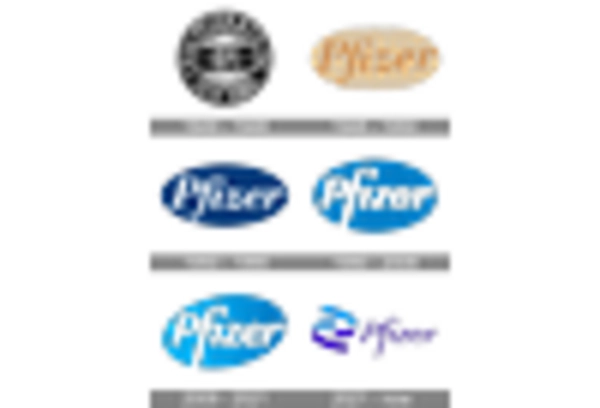North America : Market Leader in Fungal Endocarditis
North America is poised to maintain its leadership in the Fungal Endocarditis market, holding a significant market share of 182.12M in 2024. The region's growth is driven by increasing incidences of fungal infections, advancements in diagnostic technologies, and supportive regulatory frameworks. The demand for effective antifungal therapies is further propelled by rising healthcare expenditures and a growing awareness of fungal endocarditis among healthcare professionals.
The competitive landscape in North America is characterized by the presence of major pharmaceutical companies such as Pfizer Inc, Merck & Co, and Gilead Sciences. These key players are actively engaged in research and development to innovate new treatment options. The U.S. remains the leading country, supported by a robust healthcare infrastructure and significant investments in medical research, ensuring a steady supply of advanced therapeutic solutions.
Europe : Emerging Market with Growth Potential
Europe is witnessing a growing interest in the Fungal Endocarditis market, with a market size of 95.25M in 2024. The region's growth is fueled by increasing awareness of fungal infections, improved diagnostic capabilities, and a rise in the geriatric population, which is more susceptible to such infections. Regulatory bodies are also enhancing guidelines to facilitate faster approvals for antifungal treatments, thereby boosting market growth.
Leading countries in Europe include Germany, France, and the UK, where healthcare systems are increasingly prioritizing fungal infection management. The competitive landscape features key players like AstraZeneca and Roche, who are investing in innovative therapies. The European Medicines Agency (EMA) is actively working to streamline the approval process for new antifungal drugs, which is expected to further enhance market dynamics.
Asia-Pacific : Rapidly Growing Market Segment
The Asia-Pacific region is emerging as a significant player in the Fungal Endocarditis market, with a market size of 70.0M in 2024. The growth is driven by increasing healthcare investments, rising awareness of fungal infections, and a growing population at risk. Countries like India and China are focusing on improving healthcare infrastructure, which is expected to enhance access to antifungal treatments and diagnostics, thereby driving market demand.
The competitive landscape in Asia-Pacific is evolving, with local and international players vying for market share. Key companies such as Gilead Sciences and Novartis are expanding their presence in the region. The regulatory environment is gradually improving, with governments emphasizing the need for effective treatment options for fungal infections, which is likely to support market growth.
Middle East and Africa : Emerging Market with Challenges
The Middle East and Africa region is gradually developing its Fungal Endocarditis market, currently valued at 16.88M in 2024. The growth is hindered by limited healthcare infrastructure and awareness of fungal infections. However, increasing investments in healthcare and rising incidences of fungal diseases are expected to drive market growth. Regulatory bodies are beginning to recognize the importance of antifungal treatments, which may lead to improved access and availability in the future.
Countries like South Africa and the UAE are leading the way in addressing fungal infections, with initiatives aimed at enhancing healthcare services. The competitive landscape is still nascent, with few key players present. However, as awareness grows, more pharmaceutical companies are likely to enter the market, driven by the potential for growth in this underserved region.
